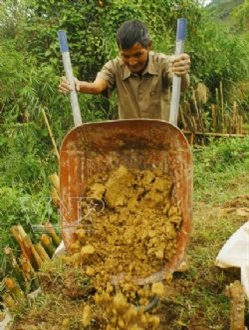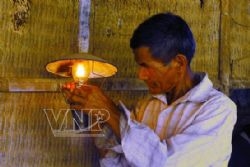A huge explosion has rocked a Japanese nuclear power plant damaged by Friday's devastating earthquake.
A pall of smoke was seen coming from the plant at Fukushima. Four workers were injured.
Japanese officials say the container housing the reactor was not damaged and that radiation levels have now fallen.
A huge relief operation is under way after the 8.9-magnitude earthquake and subsequent tsunami, which are thought to have killed at least 1,000 people.
One report suggests the number of dead is much higher, with as many as 10,000 people missing in one town alone.
The offshore earthquake triggered a tsunami which wreaked havoc on Japan's north-east coast, sweeping far inland and devastating a number of towns and villages.
Continue reading the main story
Analysis
 Richard Black Environment correspondent, BBC News
Richard Black Environment correspondent, BBC News
The term "meltdown" raises associations with two nuclear accidents in living memory: Three Mile Island in the US in 1979, and Chernobyl in Ukraine in 1986.
In both, excess heat in the reactor caused fuel to melt - and in the first, wider melting of the core. The question is whether the same thing has happened in Fukushima.
It appears that the reactor was shut down well before any melting occurred, which should reduce considerably the risk of radioactive materials entering the environment.
However, the detection of caesium isotopes outside the power station buildings could imply that the core has been exposed to the air.
Although Japan has a long and largely successful nuclear power programme, officials have been less than honest about some incidents in the past, meaning that official reassurances are unlikely to convince everyone this time round.
Japan's Prime Minister Naoto Kan declared a state of emergency at the Fukushima Daiichi and Daini (also known as Fukushima 1 and 2) power plants as engineers try to confirm whether a reactor at one of the stations has gone into meltdown.
The emergency declaration is an automatic procedure after nuclear reactors shut down in the event of an earthquake, allowing officials to take rapid action.
Evacuation zone expanded Television pictures showed a massive blast at one of the buildings of the Fukushima-Daiichi plant, about 250km (160 miles) north-east of Tokyo.
A huge cloud of smoke billowed out and large bits of debris were flung far from the building.
The Tokyo Electric Power Co (Tepco), the plant's operator, said four workers had been injured.
The Japanese government's chief spokesman, Yukio Edano, said the concrete building housing the plant's number one reactor had collapsed but the metal reactor container inside was not damaged.
He said radiation levels around the plant had fallen after the explosion.
Officials ordered the evacuation zone around the plant expanded from a 10km radius to 20km. BBC correspondent Nick Ravenscroft said police stopped him 60km from the Fukushima-Daiichi plant.
Plans are being made to distribute iodine, which can be used to combat radiation sickness, to residents of the evacuation zone.
Japan's nuclear agency said earlier on Saturday that radioactive caesium and iodine had been detected near the number one reactor of the power station.
 |
| Japanese broadcaster NHK screened a before and after image showing the damaged Fukushima plant |
The agency said this could indicate that containers of uranium fuel inside the reactor may have begun melting.
Air and steam, with some level of radioactivity, was earlier released from several of the reactors at both plants in an effort to relieve the huge amount of pressure building up inside.
Mr Kan said the amount of radiation released was "tiny".
Cooling system failure Nuclear reactors at four power plants in the earthquake-struck zone automatically shut down on Friday.
In several of the reactors at the two Fukushima plants the cooling systems, which should keep operating on emergency power supplies, failed.
Without cooling, the temperature in the reactor core builds, with the risk that it could melt through its container into the building housing the system.
Pressure also builds in the containers housing the reactor.
Tepco said it was pumping water into the Fukushima-Daiichi's number one reactor in a bid to cool it down.
The reactors the plant are Boiling Water Reactors (BWR), one of the most commonly used designs, and widely used throughout Japan's array of nuclear power stations.
Analysts say a meltdown would not necessarily lead to a major disaster because light-water reactors would not explode even if they overheated.
But Walt Patterson, of the London research institute Chatham House, said "this is starting to look a lot like Chernobyl".
He said it was too early to tell if the explosion's aftermath would result in the same extreme level of radioactive contamination that occurred at Chernobyl.
The explosion was most likely caused by melting fuel coming into contact with water, he told the BBC.
The 8.9-magnitude tremor struck in the afternoon local time on Friday off the coast of Honshu island at a depth of about 24km, 400km (250 miles) north-east of Tokyo.
It was nearly 8,000 times stronger than last month's quake in New Zealand that devastated the city of Christchurch, scientists said.
Some of the same search and rescue teams from around the world that helped in that disaster are now on their way to Japan.
As relief workers begin to reach the earthquake zone, the scale of the damage is being revealed.
One of the worst-hit areas was the port city of Sendai, in Miyagi prefecture, where police said between 200 and 300 bodies were found in one ward alone.
The town of Rikuzentakada, in Iwate prefecture, was reported as largely destroyed and almost completely submerged. NHK reported that soldiers had found 300-400 bodies there.
Chief government spokesman Yukio Edano said it was believed that more than 1,000 people had died.
But Fuji TV said as many as 10,000 people were unaccounted for in the town of Minamisanriku in Miyagi.
A local official in the town of Futuba, in Fukushima prefecture, said more than 90% of the houses in three coastal communities had been washed away by the tsunami.
"Looking from the fourth floor of the town hall, I see no houses standing,'' Kyodo news agency quoted him as saying.



 10:29 PM
10:29 PM
 Trung
Trung


 Posted in:
Posted in: 



















